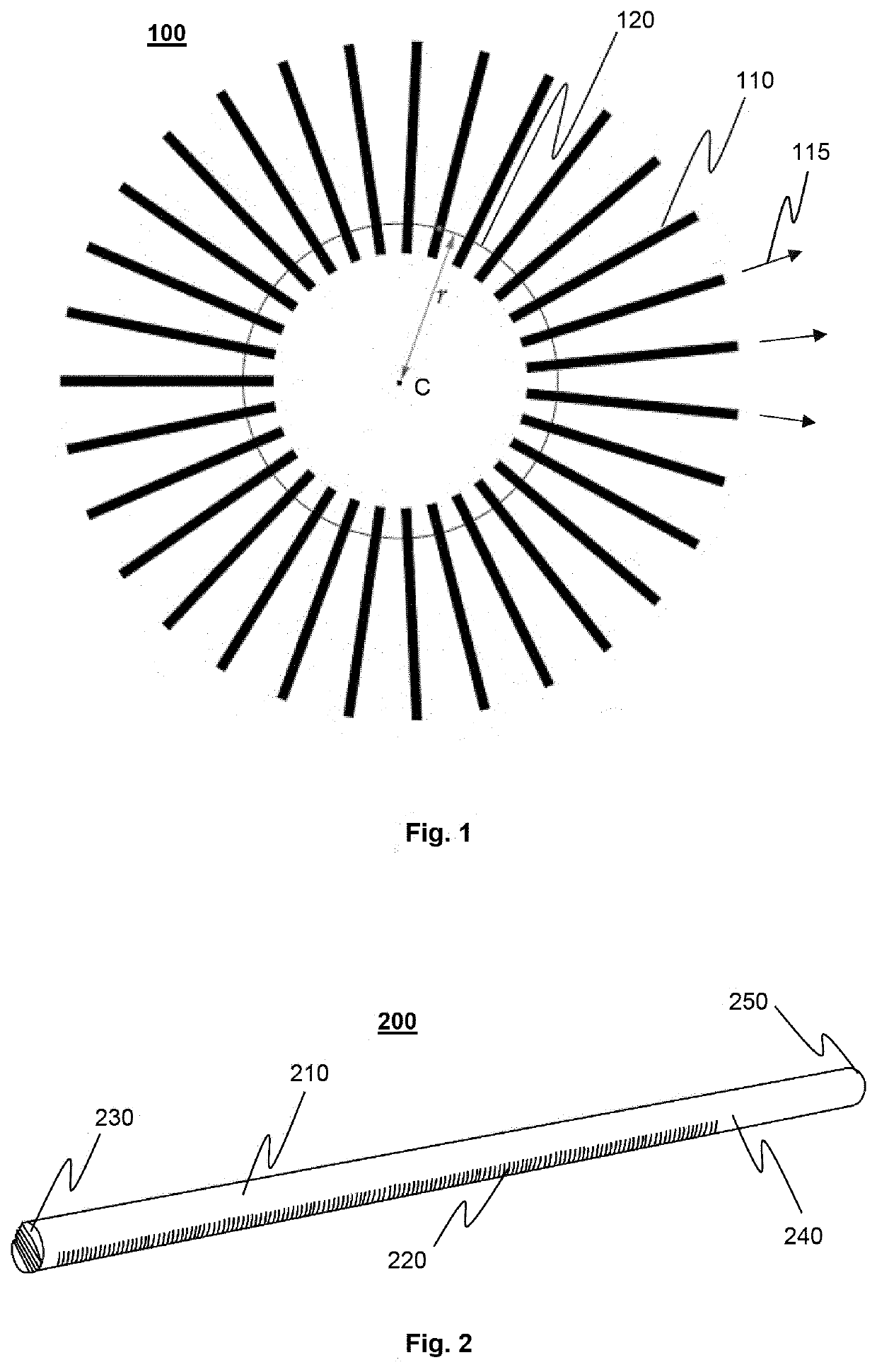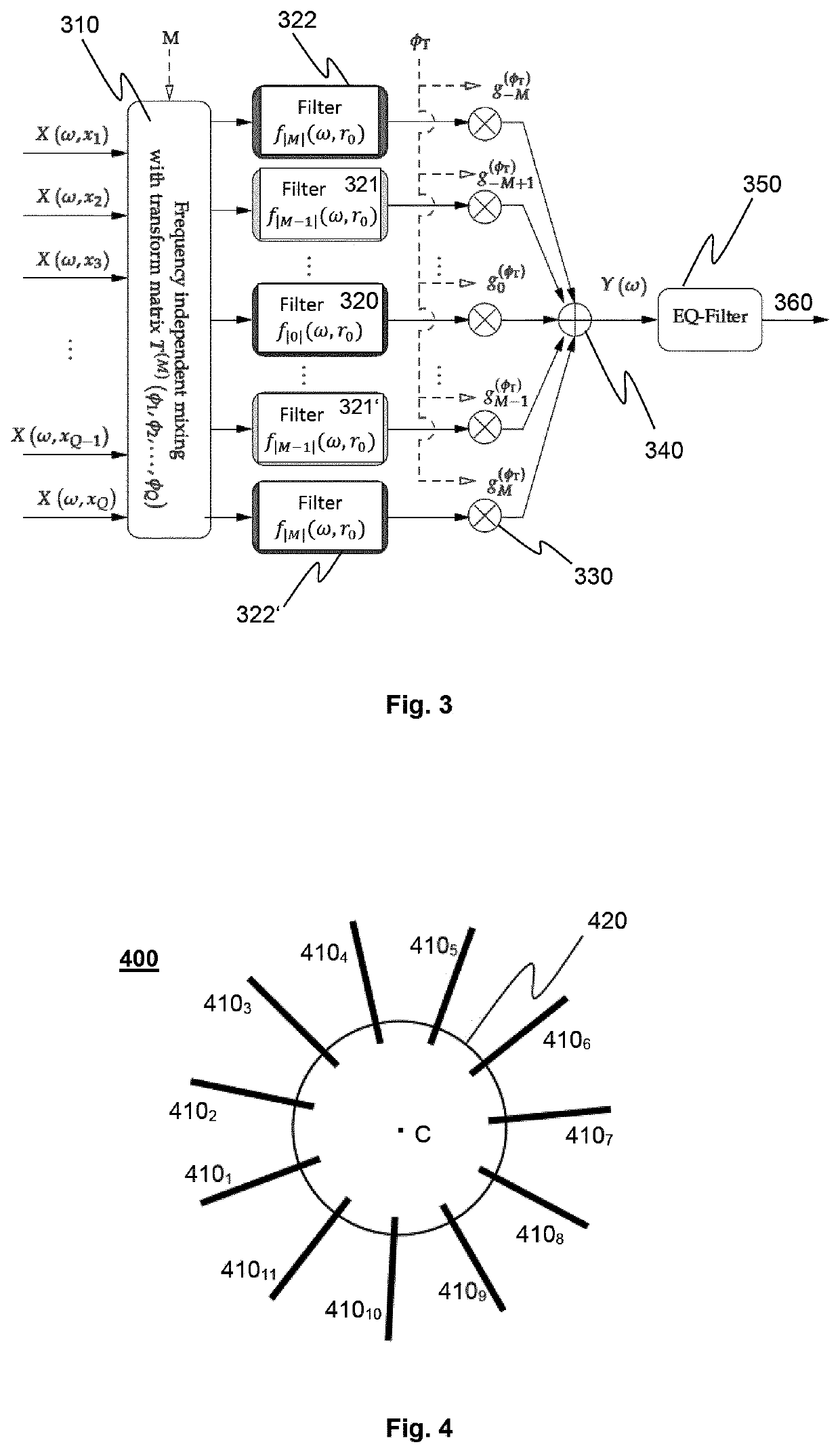Microphone array
- Summary
- Abstract
- Description
- Claims
- Application Information
AI Technical Summary
Benefits of technology
Problems solved by technology
Method used
Image
Examples
second embodiment
[0037]FIG. 4 shows a microphone array 400 in a Eleven directional microphones 4101, . . . , 41011 are arranged radially distributed uniformly over a circle 420. According to Q=2M+1 with Q=11, a signal with a degree of at most M=5 can be generated.
third embodiment
[0038]If another algorithm than modal beamforming is used, it may however be appropriate to arrange the directional microphones differently, namely not exactly radially but slightly rotated or displaced, respectively. This makes the overall arrangement smaller, without reducing the length of the individual directional microphones or the diameter of the circle of microphone capsules. FIG. 5 shows a microphone array 500 in a third embodiment, where each of the eleven microphones 5101, . . . , 51011 is rotated through an angle α with their microphone capsules being arranged on a circle 520. The algorithm used must consider this rotation, wherein very small angles can be neglected.
fourth embodiment
[0039]Moreover, it may make sense for certain applications to arrange the directional microphones on a segment of a circle that has a certain angle, e.g., if only low levels of disturbing noise from the rear are to be expected. However, the disadvantage of a segmental arrangement as compared to a circular arrangement is that for a positioning near the edge, ambient noise from directions in which no directional microphone is pointed cannot be well suppressed. This problem can be compensated partially by making the segment larger than the region to be observed. FIG. 6 shows a microphone array 600 in a fourth embodiment, wherein again eleven directional microphones 6101, . . . , 61011 are evenly distributed over a semicircle. For a central alignment near 0° corresponding to the microphone 6106 this arrangement works well. Also for a region of e.g. ±45° around the central alignment an acceptable result may be achievable. Correspondingly, a microphone array of a form as shown in FIG. 6 i...
PUM
 Login to View More
Login to View More Abstract
Description
Claims
Application Information
 Login to View More
Login to View More - R&D
- Intellectual Property
- Life Sciences
- Materials
- Tech Scout
- Unparalleled Data Quality
- Higher Quality Content
- 60% Fewer Hallucinations
Browse by: Latest US Patents, China's latest patents, Technical Efficacy Thesaurus, Application Domain, Technology Topic, Popular Technical Reports.
© 2025 PatSnap. All rights reserved.Legal|Privacy policy|Modern Slavery Act Transparency Statement|Sitemap|About US| Contact US: help@patsnap.com



